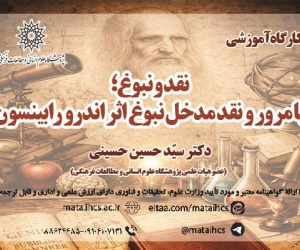تحلیل آراء و روایات تفسیری ابوهریره (مقاله علمی وزارت علوم)
درجه علمی: نشریه علمی (وزارت علوم)
آرشیو
چکیده
عصر صحابه یکی از ادوار مهم در تاریخ تفسیر قرآن محسوب می شود. در این دوره برخی صحابه پیامبر (ص) بر اساس آموزه هایی که از ایشان دریافت کرده بودند به تفسیر آیات پرداختند. یکی از این صحابه مفسر ابوهریره است. ابوهریره قاص بوده، و ارتباط نزدیکی هم با دستگاه خلافت اموی داشته است. این دو ویژگی او بر نحوه تفسیر قرآن او تأثیر نهاده اند. لازم است با مطالعه همه آراء و روایات تفسیری ابوهریره و تحلیل آن ها، نحوه رویارویی او با آیات قرآن تبیین شود. بر اساس یافته های این مطالعه روایات تفسیری ابوهریره را می توان در سه دسته کلان صورت بندی کرد: تفسیر هستی شناسانه، انسان شناسانه، و قرآن شناسانه. این که چرا شخصیتی هم چون ابوهریره در نسل صغار صحابه و نیمه های سده 1ق از میان مضامین متعدد قرآن خود را درگیر توجه به این چهار سنخ از آیات نموده، امری است که در جای دیگری باید جداگانه تحلیل شود.Analysis of Abū Hurayra's Quranic Exegesis
The era of the Companions is considered one of the most important periods in the history of interpretation of the Qurʾān. During this period, some companions of the Prophet interpreted the verses based on the teachings they had received from him. One of these companions is Abū Hurayra. He was al-Qāṣṣ (story teller), and he had a close relationship with the Umayyad Caliphate. These two characteristics of his have influenced the way he interprets the Qurʾān. It is necessary to explain his way of confronting the verses of the Qurʾān by studying all opinions and interpretive traditions of him and analyzing them. It seems that Abū Hurayra's interpretative narratives can be divided into three major categories: ontological, anthropological, and Qurʾānic interpretations. Why a personality like Abū Hurayra, in the younger generation of the Companions and in the middle of the 1 st century AH, among the many themes of the Qurʾān, involved himself in paying attention to these four types of verses, is a matter that must be analyzed separately.









